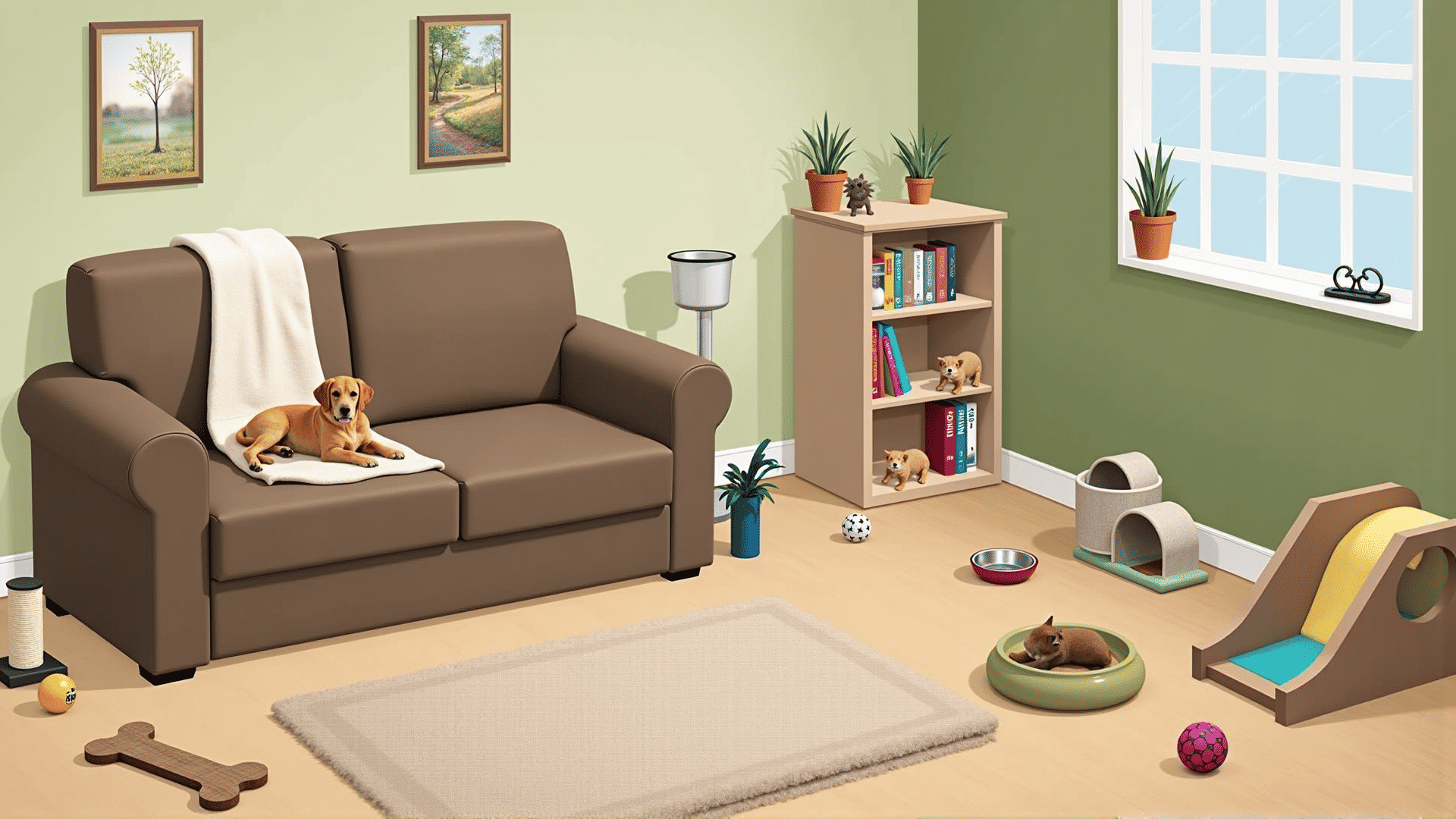Creating a pet-friendly environment in your home involves a thoughtful approach to ensure that your furry friend feels both safe and happy. By making a few simple adjustments and additions, you can design a space that caters to your pet's physical and emotional needs, enhancing their quality of life and your own. Here are some ideas to get you started on transforming your living area into a welcoming haven for your pet.
1. Safety First:
Pet-proofing your home is a crucial step in ensuring your pet’s safety. Secure all hazardous items, such as cleaning supplies and small objects that could be ingested or cause harm. Consider using baby gates or similar barriers to restrict access to areas that might not be safe for pets. Wrap any exposed electrical cables and cords tightly to prevent chewing, and install secure latches on cabinets within reach of curious paws.
2. Cozy Nooks:
Pets need their own cozy spaces where they can retreat and relax. Whether it's a plush bed for a dog or a soft perch for a cat, provide a specific area dedicated to comfort. Position these spots in quieter parts of your home, away from high traffic areas, to give your pet a peaceful environment to unwind.
3. Playful Environments:
Stimulating your pet’s mind and body is essential. For dogs, consider having a selection of toys that promote physical activity, like balls or rope toys. For cats, vertical spaces such as cat trees or wall shelves can encourage climbing and exploration. Both dogs and cats benefit from interactive toys that challenge their problem-solving skills.
4. Natural Light and Fresh Air:
Access to natural light and fresh air is beneficial for pets. Try to place your pet’s resting or play areas near windows where they can enjoy sunlight and watch the outside world. If you have a secure outdoor space, allow your pet supervised access to enjoy sights, sounds, and smells that are both stimulating and enriching.
5. Maintain Cleanliness:
Regular grooming and cleaning are crucial in keeping your pet-friendly space hygienic. Use pet-safe cleaning products to keep floors and furniture free from hair and pet dander. Consider using easy-to-clean materials for your pet's bedding and any household fabrics they frequently come into contact with.
6. Nourishment Stations:
Create a dedicated space for meals and hydration. Having an organized feeding area not only helps maintain cleanliness but also provides consistency in your pet’s routine. Ensure that fresh water is always available and placed in a spot where spillage is minimal.
7. Connection and Communication:
Bonding with your pet is essential for their emotional well-being. Spend quality time engaging in activities they enjoy, whether it’s a game of fetch, a leisurely walk, or simply cuddling. Positive communication and physical affection reinforce your pet’s sense of security and belonging.
In conclusion, creating a pet-friendly environment is about combining safety, comfort, and stimulation tailored to your pet's needs. By taking these steps, you’ll forge a deeper bond with your pet and contribute to their overall happiness and well-being.
